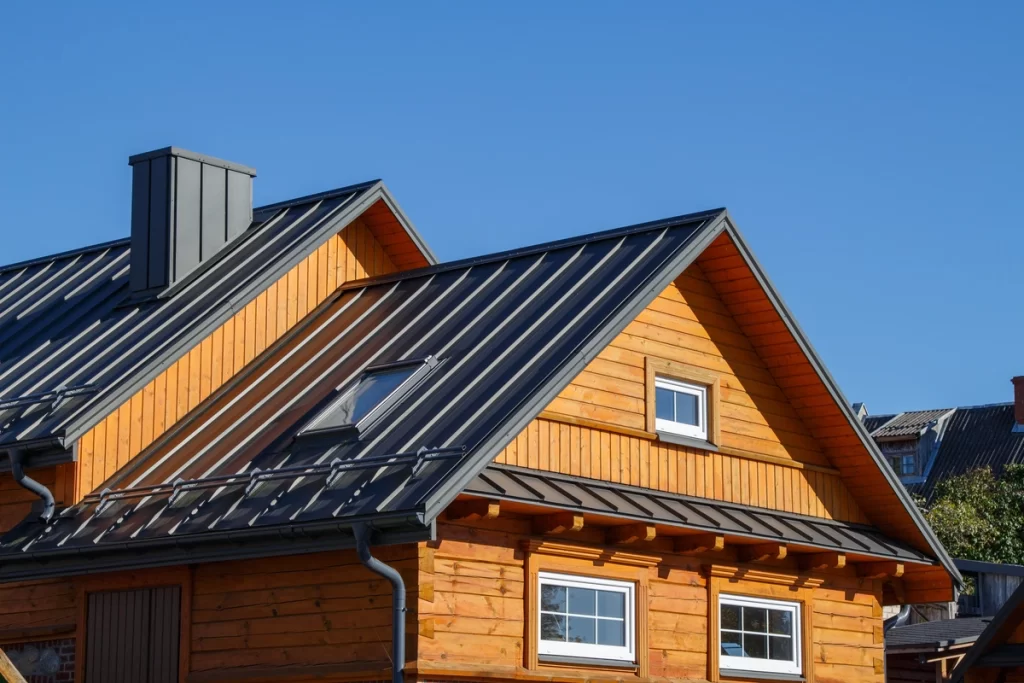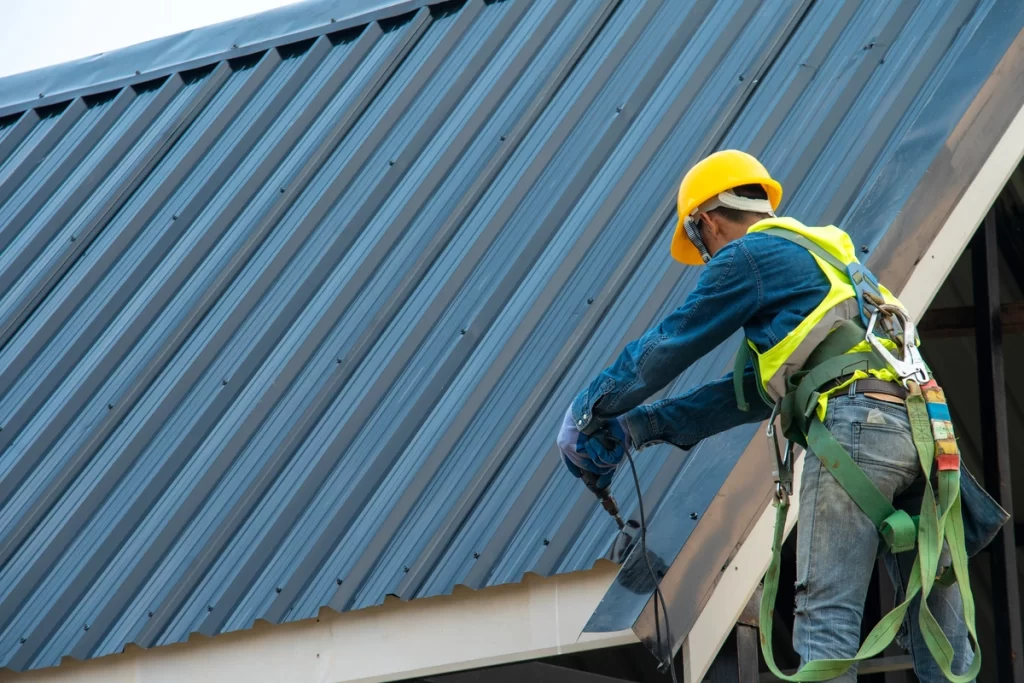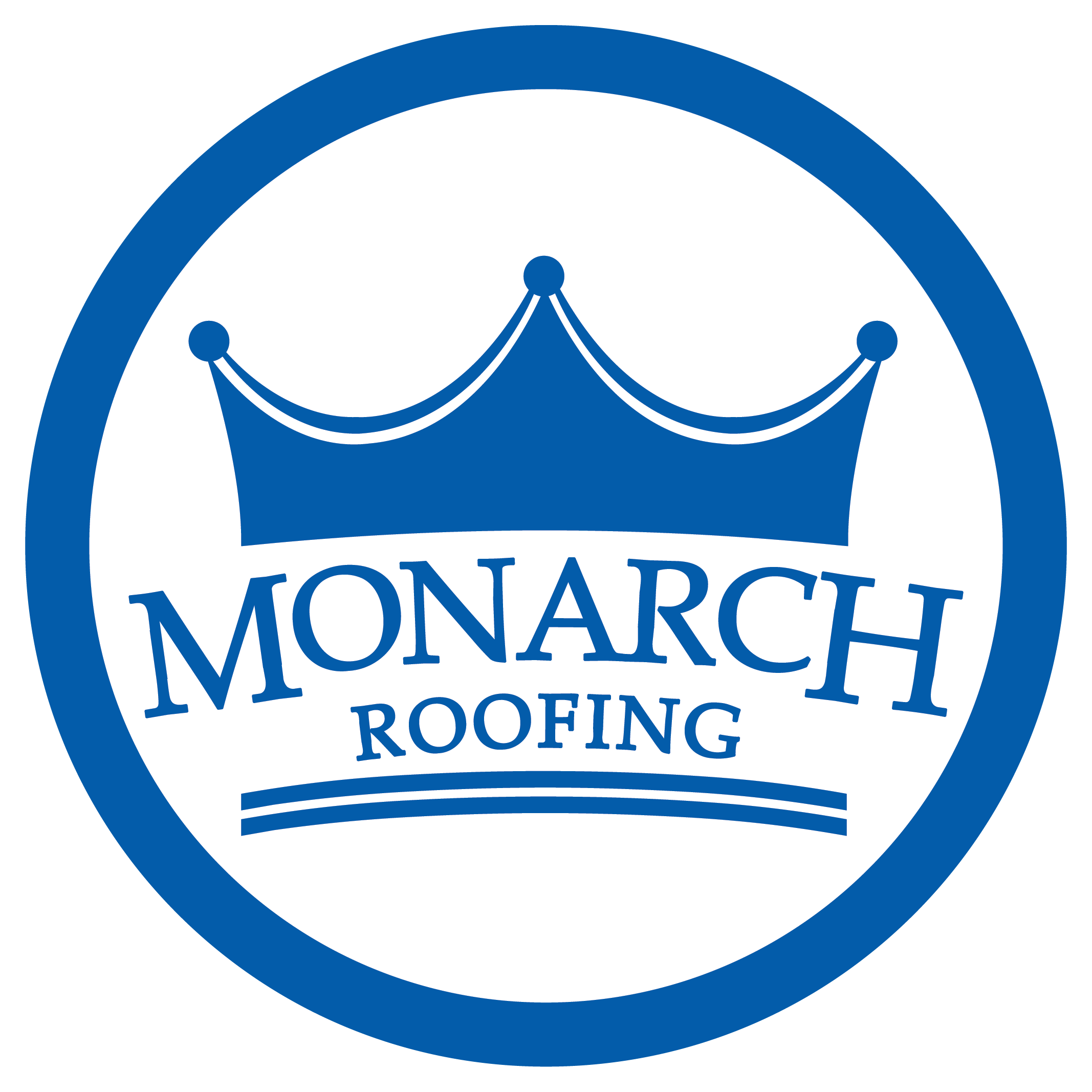In the realm of roofing materials, few options offer the durability, longevity, and aesthetic appeal of metal roofs. Whether it’s the sleek modern look of standing seam panels or the classic charm of corrugated metal, a well-maintained metal roof can be a stunning addition to any home or building.
However, like any roofing material, metal roofs require regular maintenance to ensure they continue to perform at their best. In this blog post, we’ll help you understand:
- The benefits of metal roofing
- Common reasons why metal roofs become damaged
- What that damage looks like
- How to repair it
- Essential metal roof maintenance tips
Ready to install or maintain your metal roofing system with a team you can trust? Keep reading for a metal roof that lasts!
Benefits of a Metal Roof

Before diving into maintenance tips, let’s first explore why metal roofing is such a popular choice for homeowners and property managers:
- Durability: Metal roofs are renowned for their durability and longevity. Unlike traditional asphalt shingles, which may need replacing every 15-20 years, a well-installed metal roof can last 50 years or more with proper maintenance.
- Weather Resistance: Metal roofs excel at withstanding the elements, including heavy rain, snow, high winds, and hail. They are also resistant to fire, which can provide added peace of mind for homeowners in wildfire-prone areas.
- Energy Efficiency: Metal roofs are highly reflective, meaning they reflect solar heat rather than absorbing it. This can help reduce cooling costs in hot climates and make your home more energy-efficient overall.
- Low Maintenance: While metal roofs do require some maintenance, they generally require less upkeep than other roofing materials. With proper care, you can expect your metal roof to remain in excellent condition for decades.
Common Reasons Metal Roofs Become Damaged
Despite their durability, metal roofs can still sustain damage over time. Some common reasons why metal roofs become damaged include:
- Impact Damage: Heavy hail, falling branches, or debris can dent or scratch metal roofing panels, compromising their integrity and potentially leading to leaks.
- Corrosion: While most metal roofing materials are treated to resist corrosion, exposure to saltwater, industrial pollutants, or acidic rain can cause rust and corrosion over time, particularly in coastal or industrial areas.
- Poor Installation: Improper installation techniques or using subpar materials can lead to issues such as leaks, loose panels, and premature wear and tear.
- Expansion and Contraction: Metal roofs expand and contract with temperature fluctuations, which can cause fasteners to loosen over time if not properly installed or maintained.
What Metal Roof Damage Looks Like
Identifying damage to your metal roof early is crucial for preventing more extensive issues down the line. Here are some common signs of damage to watch out for:
- Dents or Dimples: Visible dents or dimples on the surface of metal roofing panels may indicate impact damage from hail, falling debris, or other sources.
- Rust or Corrosion: Rust spots, particularly around fasteners or seams, are a telltale sign of corrosion and should be addressed promptly to prevent further deterioration.
- Loose or Missing Fasteners: If you notice loose or missing screws or nails holding your metal roof panels in place, it’s essential to tighten or replace them to prevent leaks and structural issues.
- Leaks or Water Stains: Water stains on your ceiling or walls, as well as signs of moisture or water intrusion in your attic, may indicate a leak in your metal roof that needs immediate attention.
How to Repair Metal Roof Damage

Fortunately, many types of damage to metal roofs can be repaired relatively easily with the right tools and materials. Here are some common repair techniques:
Dent Repair:
Small dents or dimples in metal roofing panels can often be repaired using a rubber mallet or similar tool to gently tap the damaged area back into place. For larger dents, you may need to contact a professional roofer.
Rust Removal and Treatment:
To address rust spots on your metal roof, start by removing any loose rust with a wire brush or sandpaper. Once the surface is clean, apply a rust-inhibiting primer and a coat of metal roof paint to prevent further corrosion.
Tighten Loose Fasteners:
Check your metal roof regularly for loose or missing fasteners, particularly after severe weather events. Use a screwdriver or drill to tighten loose screws or nails, and replace any missing fasteners as needed.
Seal Leaks:
If you discover a leak in your metal roof, it’s essential to locate and seal the source of the leak as soon as possible. Depending on the severity of the leak, you may need to patch the damaged area with roofing cement or replace a section of damaged flashing or sealant.
Maintaining Your Metal Roof: 4 Tips
In addition to addressing damage as it arises, regular maintenance is key to prolonging the lifespan of your metal roof. Here are some essential maintenance tips to keep your metal roof in optimal condition:
1) Clean Gutters and Downspouts:
Clogged gutters and downspouts can trap water on your roof, leading to rust, corrosion, and leaks. Make sure to clean your gutters regularly to prevent debris buildup and ensure proper drainage.
2) Trim Overhanging Branches:
Overhanging tree limbs can pose a risk to your metal roof, especially during storms or high winds. Trim back any branches that hang over your roof to prevent damage from falling debris.
3) Inspect Sealant and Flashing:
Check the sealant and flashing around vents, chimneys, skylights, and other roof penetrations regularly for signs of wear or damage. Repair or replace any deteriorated sealant or flashing to maintain a watertight seal.
4) Schedule Professional Inspections:
While DIY maintenance is essential, it’s also a good idea to schedule periodic inspections by a professional roofing contractor. A trained eye can identify potential issues early and recommend the necessary repairs or maintenance to keep your metal roof in top condition.
Learn How to Care for Your Metal Roof System
A well-maintained metal roof can provide decades of reliable protection for your home or building. By understanding the common causes of metal roof damage, knowing how to identify signs of damage, and following proper maintenance techniques, you can ensure that your metal roof remains in excellent condition for years to come. Whether you’re dealing with minor dents and scratches or more significant issues like rust or leaks, timely repairs and proactive maintenance are the keys to preserving the beauty and functionality of your metal roof investment.
Contact Monarch Roofing to learn about metal roofing systems and how to maintain them!





